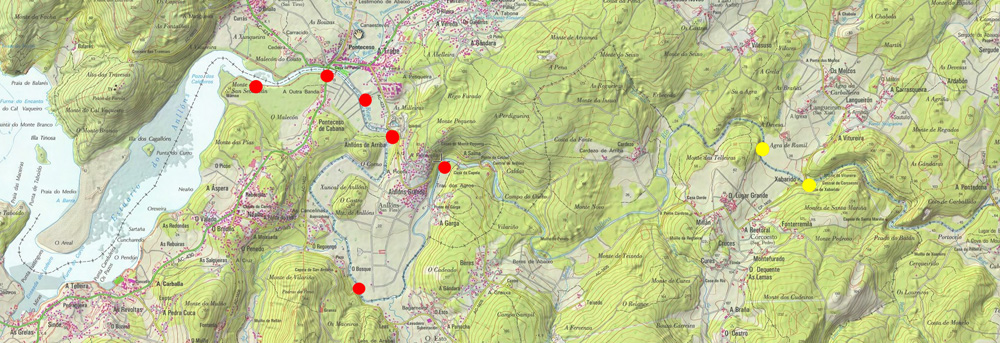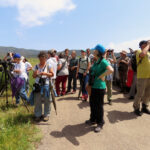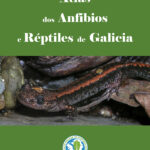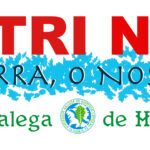The SGHN has just gained access to an article by researchers at the Institute of Marine Investigation (known in Spanish as CSIC), and the University of Vigo. This occurred almost concurrently with the positive Declaration of Environmental Impact granted by the authorities to the gold mining operation of the Canadian company Edgewater Corporation by the Environmental Council (which acted remarkably quickly in this case as opposed to that of the initiatives for the defence of the environment). The article discusses the level of arsenic in the basin of the Galician river Anllóns (Costas et al., 2011), and was not published on the day when the SGHN made allegations concerning this particular mining project.
Normal arsenic concentration
- In rocks: from 0.5 to 2.5 mg/kg (Kabata-Pendias and Pendias, 1984) with an average rate of 1-2 mg/kg on the Earth crust (Matschullat, 2000). However, in the mining area of Corcoesto there are sections with massive concentration of arsenopyrite, with up to 100 g/kg (Costas et al., 2011). Thus, there is up to 10% of arsenic, an amount 50,000 times over the normal rates.
- Unpolluted soil: arsenic concentration rarely exceeds 100 mg/kg (Krysiak and Karczewska, 2007), while in Corcoesto there are areas with up to 4g/kg in surface soil horizons (Devesa-Rey et al., 2008). Therefore the concentration is 400 times above the average.
Arsenic in the water of the river Anllóns
According to the research article by Costas and collaborators (2011):
- The concentration of arsenic in the water of the river Anllóns is 2.1 times higher after passing the area of arsenopyrite in the middle of the basin (the mining area of Corcoesto), with samples of up to 3.96 µg/l and approaching to:
- The lower limit (4.5 µg/l) for European polluted rivers (Plant et al., 2003).
- Half of the higher limit for safe water established by the European Union (Directive 98/83/CE), the United States Environmental Protection Agency (USEPA, 1975), and the World Health Organisation (WHO, 2001). In addition, the concentration of particulate arsenic in water is 1.7 times higher than average.
- Each year, the river Anllóns adds at least 850 kg of arsenic to its estuary, and most of it comes from the arsenopyrite area of Corcoesto. Considering the size of the basins, the amount of arsenic which reaches the estuary of Anllóns each year (0.83 kg/s/km2) is higher than the amount present in the great European rivers which flow through densely populated industrialised areas (the Thames, the Seine, the Loire, the Garonne, and the Rhône: 0.44-0.64 kg/s/km2).
Arsenic in the sediments of the Anllóns estuary
Research by Costas and collaborators (2011) also states that the arsenic concentration in the sediments of the Anllóns estuary varies from 15 to 308 mg/kg, and can be considered polluted (Hakanson, 1980) in the sections immediately after the old mining area of Corcoesto and at the beginning of the estuary. This pollution “must be a consequence of fast peaks of the river’s flow, which can carry sediments with larger particle size from the mining area”. According to the guidelines for the quality of sediments (Long et al., 1995), the concentration of arsenic in 6 of the 12 spots analysed in the estuary equals (1 case) or significantly exceeds 70 mg/kg. Such levels bring forward consequences that may put the environment at risk.

Map of the low and middle part of the Anllóns basin and its estuary. The yellow circles show the spots where Costas and collaborators (2011) discovered that the concentration of arsenic in sediments starts increasing, right in the waters below the mining area. The red circles show the sampling stations where the content of arsenic equals (the one in the left) or exceeds (the rest) the limit to be considered ‘polluted’.
Arsenic and gold mining in Corcoesto
The most polluted sediment areas could partly be a natural consequence of the presence of arsenopyrite in the region. However some data provided by Costas et al. (2002) suggest that those are a direct consequence of the old gold mining operation, which is currently being reactivated. Concerning this issue, it should be stressed that as opposed to the small-scale underground mining which was performed in Corcoesto in the past, the project of the Canadian company Edgewater Exploration Ltd would involve operating open pit mining in a 773.6 ha area. Afterwards, it would imply crushing the rocks and then process them with cyanide to extract pure gold, and after with caustic soda and hydrochloric acid to remove all the cyanide and correct the pH.
The Edgewater Exploration Ltd project will hugely increase the surface of soil exposed to erosion and, consequently, the weathering of the rocks and the solubilisation of the arsenic content. In addition, 100,000 tonnes of waste would be produced each year from processing the rocks with cyanide/soda/hydrochloric. Apart from extracting the gold, this would doubtlessly accelerate the process of solubilisation of other elements in the rocks, arsenic among them.
In the view of the foregoing, the gold open pit mining project of Edgewater Exploration Ltd could deteriorate the current pollution of the Anllóns water and of the sediments in its estuary to unacceptable levels for human health and for the conservation of the ecosystems. This includes the Community Interest Areas in the region (ZEC ES1110015 Río Anllóns) and its immediate surroundings (ZEC ES1110005 Costa da Morte; ZEPA ES0000176 Costa da Morte).
SGHN requests
Implementation of the principle of caution
Considering this information, the SGHN has just requested that the Spanish Council for the Environment, Territory, and Infrastructures implement the principle of caution and consequently cancel the positive Declaration of Environmental Impact for the project Mining Concessions “Emilita” nº 1221, “Ciudad de Landró” nº 1454, and “Ciudad del Masma” nº 1445. Together, these resolutions are widely known as “Mining group of Corcoesto” (Cabana, Coristanco, and Ponteceso; A Coruña).
Simulation of the effects of the worst potential accidents
In the case that the project is not cancelled, SGHN requests that Galician authorities require the development of a new Study of Environmental Impact including a simulation of the health, economic, and ecological effects of the worst potential accidents:
- The accidental dump of the highest amounts of dangerous toxic products stored in the mining complex: 50 tonnes of cyanide, 50 tonnes of caustic soda, and 30 tonnes of hydrochloric acid.
- The accidental dump of dangerous toxic products (cyanide, caustic soda, and hydrochloric acid) during its transport to the mining complex. This simulation is essential considering the preceding cases of metal open pit mining. For example, the damburst of the tailing pond in Aznalcllar, in which the Andalucian authorities and the Hydrographic Conferedation of the river Guadalquivir spent 132 million euros to clean the pollution caused by the Swedish company Boliden. This company intends not to pay, or to pay just 1% of the damages. (more…)
Environmental responsibility insurance
In case that the project is not cancelled, SGHN also requests that the company be required to obtain a civil responsibility insurance from a European insurance company following EU law. The objective would be to prepare for any foreseeable damage according to the simulation described in the previous section, following what it is stated in European Directive 2004/35/CE and Spanish law 26/2007 on environmental responsibility regarding the prevention and repair of environmental damages.
References
- Costas M, Prego R, Filgueiras AV, Bendicho C. 2011. Land–ocean contributions of arsenic through a river–estuary–ria system (SW Europe) under the influence of arsenopyrite deposits in the fluvial basin. Science of the Total Environment 412-413: 304-314.
- Devesa-Rey R, Paradelo R, Díaz-Fierros F, Barral MT. 2008. Fractionation and bioavailability of arsenic in the bed sediments of the Anllóns River (NW Spain). Water, Air & Soil Pollution 195: 189–99.
- Directiva 98/83/CE del Consejo, de 3 de noviembre de 1998, relativa a la calidad de las aguas destinadas al consumo humano.
- Hakanson L. 1980. An ecological risk index for aquatic pollution control. A sedimentological approach. Water Research 14: 975-1001.
- Kabata-Pendias A, Pendias H. 1984. Trace elements in soils and plants. Boca Raton, FL: CRC Press- 315 pp.
- Krysiak A, Karczewska A. 2007. Arsenic extractability in the areas of former arsenic mining and smelting, SW Poland. Science of the Total Environment 379: 190–200.
Text translated by María Estévez Rodríguez (student of the Degree of Translation and Interpretation of the University of Vigo)






